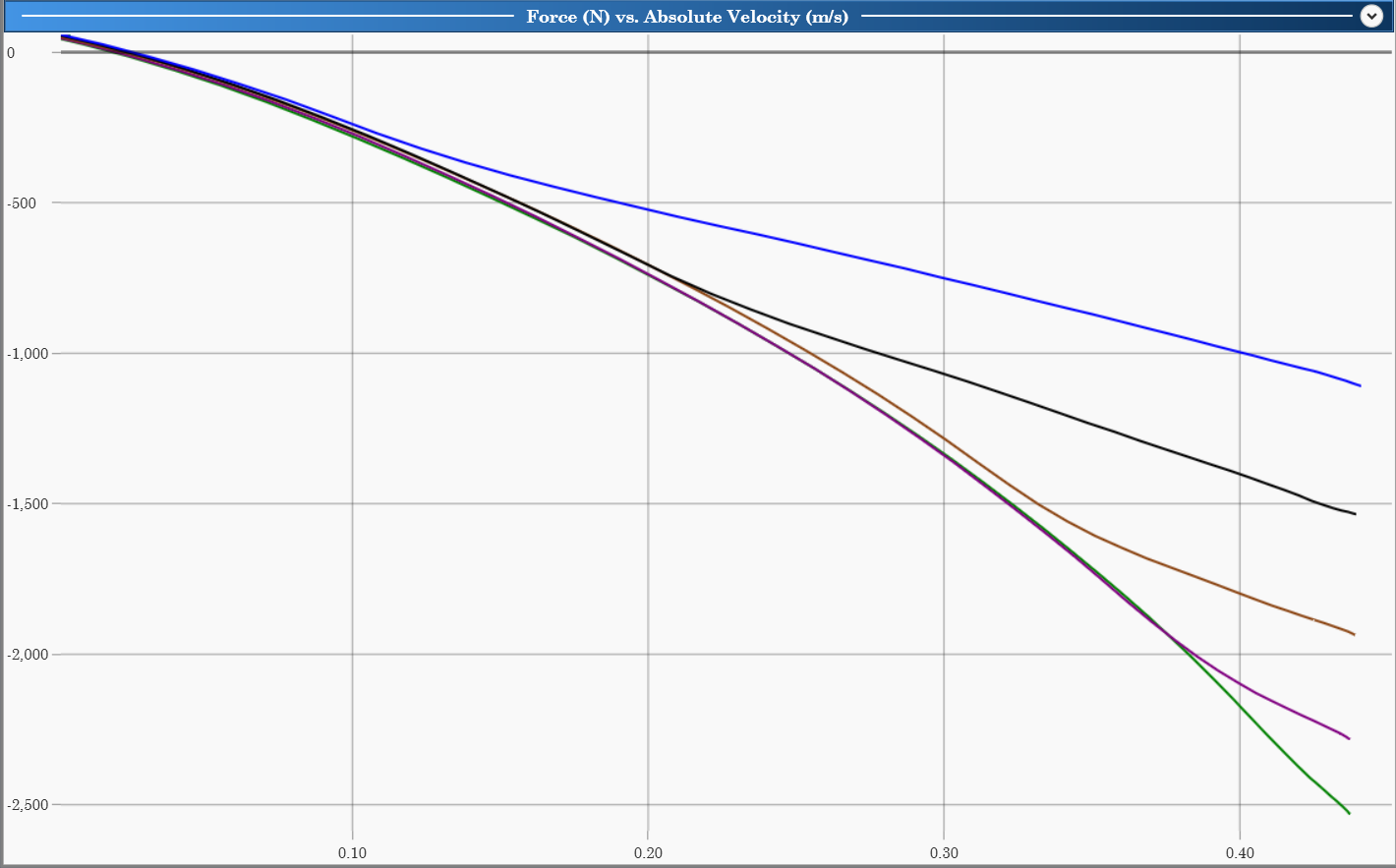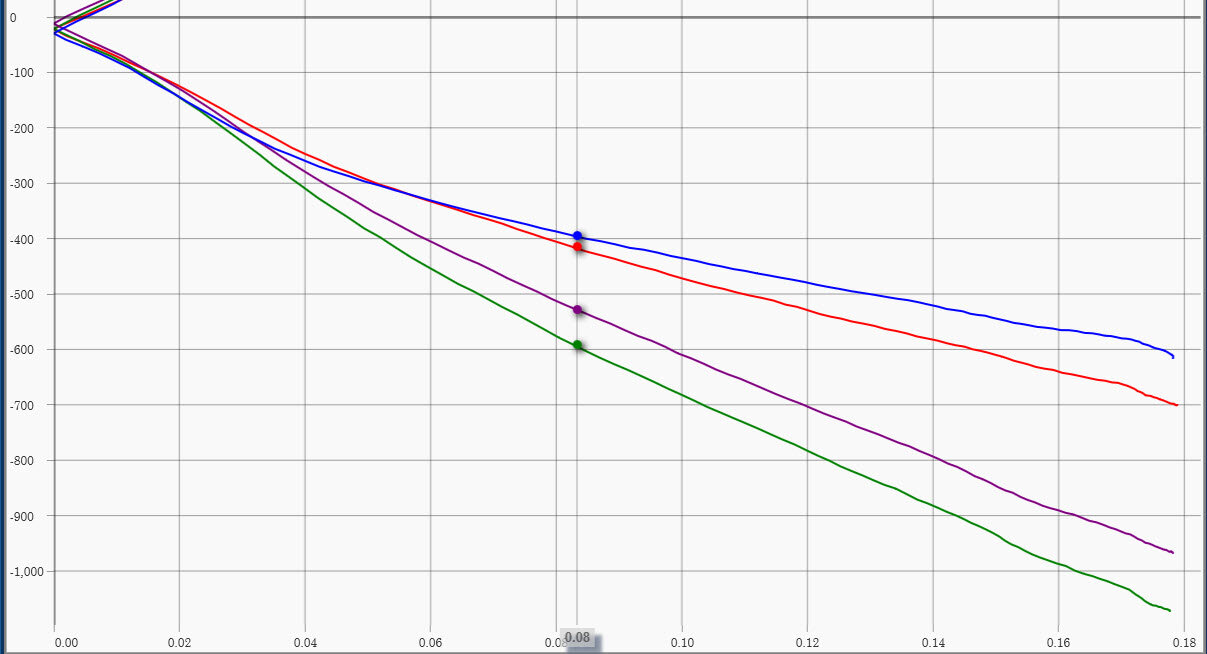The All-New 2021 Fox DHX2
Here we have the 2021 Fox DHX2, this is a brand new shock from the ground up, and nothing carries over from last year's shock at all. There are lots of new interesting features so lets dive in to those now.
The first thing is the high-speed rebound adjuster is now positioned at the bottom eyelet. It has eight clicks of adjustments, and uses Fox's VVC valving technology that comes from last years 36 Grip 2. The great thing about this is it changes the leverage on the valve stack as opposed to adding preload to a spring, which means that the actual rate of damping changes rather than offsetting the curve up and down as you would with a typical adjuster. This is more like revalving the shock, so can accommodate a wide range of damping really well with little compromise.
To the right is a high speed rebound adjuster sweep from a 2018 Fox DHX2, you can see the opening point is being shifted later as damping is increased
On the left is the 2020 High speed rebound adjuster with VVC, which changes the slope of the whole curve
The spring is now retained by a circlip under the seat. Changing to that system means 360° of contact, which has much more support and a stronger interface. It also houses that cup for the new bottom out bumper which is much taller and softer than last year's, so that's going to do a much better job of cushioning the bottom out than last years which was a very dense, short rubber one.
The shaft is now 9.5mm instead of 9, which doesn't sound like a big change but is roughly a 17% increase in stiffness. This is great because the amount of sideloading that a shock sees is a lot more than you'd expect and the reason for a lot of the failures that happen these days. Combining that shaft with the increased overlap allowed by the longer metric sizing system manufacturers are shifting too, this should be a robust design. It also helps with the shocks compliance as well by allowing it to slide smoothly without binding.
The other thing about being 9.5mm as supposed to half-inch or larger is that the cross-section the gas pressure is pushing on is much smaller so the internal spring force is quite low and the shock is fairly easy to activate. The shaft isn't Kashima or made from light aluminium but instead is steel and a better design in my opinion
The seal head houses a cap secured by two screws, which is where we we can install stroke adjustment clips to increase or limit the stroke of the shock. Previously you would need to disassemble the shock or remove the eyelet to take it down.
The preload adjuster now has actual *detents* which means you can set your preload precisely to the minimum amount needed to secure the spring, but the clicks will stop it from unwinding itself while it's in use. Less preload = more compliance
The piggyback is a lot shorter and wider than previous years and by moving to a wider IFP the piston doesn't have to travel as far for the same amount of shaft displacement. That means it can accelerate and change direction quicker than before so this will contribute to a much more responsive shock.
The new low profile cap allows for more gas volume and also appears to be using the exact same charging port as the RockShox Super Deluxe which means it should be the same fill tool that we've already been using.
You'll see the damping adjustments at the top are low-speed rebound and compression with a 3mm hex and now have about 16 clicks each. All of these adjusters use to have 22 clicks which were a lot more confusing, so reducing the number makes it a lot simpler.
These knobs do a really good job and have a wide range. There's definitely a noticeable change between each click and it's quite even throughout the whole range, this is traditionally pretty difficult to do, so it is nice that Fox has taken the time to develop it this way.
High-speed compression is adjusted with a 6MM hex which again has only 8 clicks. It does have quite a good range but really only affects very high speeds which is interesting. So this will be your bottom out resistance and really big hits while your general bump control is handled more by the low speed on this shock, which is a little bit unique and something to be aware of. It's one of the reasons why we like to dyno these new shocks before we get them on the trail.
The last thing is a climb switch and this definitely makes a nice firm pedal mode, I don't think you'll be lacking in that respect at all if that is something you need in a shock.
Overall the Fox DHX2 appears to do everything really well, has lots of good features and is definitely an improvement over last year. So we can't wait to get it on the trail!




